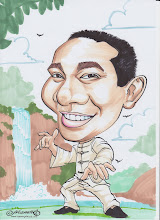"Empty your mind. Be formless, shapeless. Like water. When you put water into a cup, it becomes the cup. When you put water into a bottle, it becomes the bottle. When you put water into a teapot, it becomes the teapot. Water can flow, or it can crash. Be water my friend" Bruce Lee
The big question is "How do we "be water"?". I believe the answer is by understanding and applying the principles of the art we learn. I say this because, water reacts and becomes what it is because of the interaction between its molecules in relation to the stress and pressure put forth by outside forces. So in martial arts, what are the laws that govern it? The answer is, its principles!
For Wing Chun, the principle lies in the interaction of Yin and Yang. For Yip Kin Wing Chun the students are taught of this interaction by learning the forms. The changes within the forms follow the principles of Yin and Yang (i.e. A"Yang" type technique will come after a "Yin" type technique which consequently came from a "Yang" type technique"). After the students understand the relationship and the changes, the continuous change is further drilled using weapons' forms, mok yan jong and a two man form we call "Chi Sau". Students will come to a natural state of change and it comes without thinking.
Taijiquan (especially Chen style Taijiquan) uses the same methods as Yip Kin Wing Chun but their principles and laws are different (well, they are a different martial art and is slightly older than us anyway!). But the basic training principles are the same (empty hand, weapons and later Tui Shou). I see the same principles applied in other Tradional Chinese Martial Arts.
For Hong Kong Wing Chun, the principles are introduced in the form but drilled separately with a partner/(s). The teacher will guide the students through the drills to make sure the students "remember" the principles at muscular level and is able to change at will without thinking.
So understand the basic principles and the LAW that govern or apllied when your martial art was created. Then, YOU CAN BE WATER MY FRIEND!
p/s: If you want to understand more about the basics of becoming water (Wing Chun way), join our 3 days 2 nights training on the 11th to the 13th of September 2009. For details, log on to,
